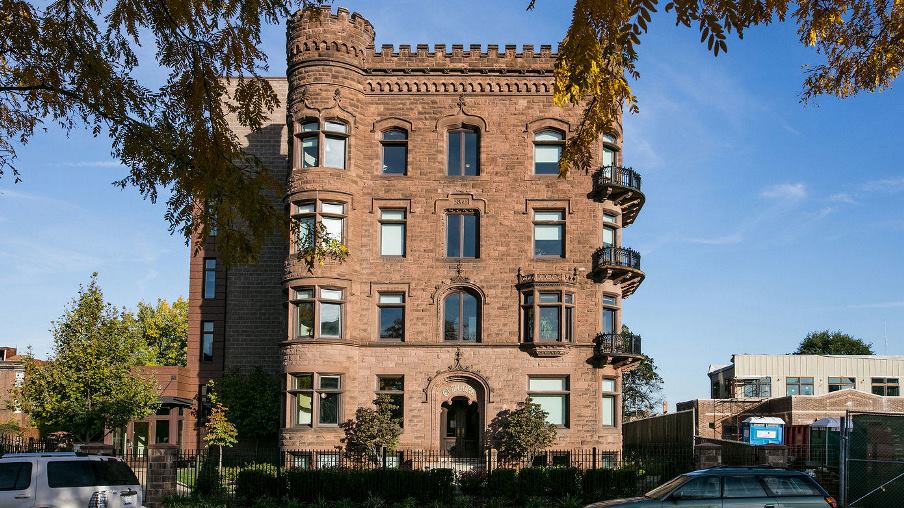Just after Detroit, Michigan developers and community leaders Tom and Peggy Brennan purchased the El Moore building in 2010, their associate Jason Peet happened to notice a nearby road crew throwing old curbstones into dump trucks.
Peet didn’t know exactly what he’d do with the stones, but he knew he could do something. He approached the crew’s boss, and they struck a deal—$100 worth of pizza in exchange for delivering the curbstones down the street instead of dropping them at a landfill.
As it turned out, some of the curbstones were a distinctive brownish-pink hue, just like the Lake Superior sandstone that covers the El Moore’s 1898 exterior. They’d been laid before 1910, which meant they probably came from some of the same northern Michigan or Upper Peninsula quarries as the Romanesque Revival building’s stones. Peet and the Brennans ended up using them to build the columns that now grace the El Moore’s driveway and gate entrances.
“We never could’ve had these pillars that matched the building so well if we didn’t have those curbs,” says Peet, the building’s manager.
The Brennans and their team saw the building’s significance to the neighborhood, both as a piece of history and as a symbol of Detroit’s larger trauma of abandoned buildings, empty lots, and dilapidated architecture. Were the El Moore to be demolished, the “first” house would be almost halfway down the block. Or, the building—with its roughly 16,000 square feet, crenellated design, and architectural history—could undergo yet another makeover and serve as a stabilizer.
“This building makes the whole block work,” Peet says.
Restoring this lovely building in this sensitive manner could be considered an act of community preservation. “You reestablish all the things that people loved about neighborhoods 100 years ago, and what’s beautiful is, you just see it naturally playing itself out,” says Peet. “There’s a reason that neighborhoods 100 years ago were built the way they were.”
Photo by Michelle and Chris Gerard.

